Tom's Guide Verdict
The Insta360 X4 is the best 360 camera you can buy, fixing the major issues with its predecessor and allowing 360 reframing in much higher resolution than ever before, at 2.7K. It features very impressive battery life and great stabilization, and the companion Insta360 app offers loads of awesome effects. Unlike the X3, the X4 can shoot in single lens 4K/60p, allowing it to compete with (and beat) many of today’s flagship action cameras.
Pros
- +
8K/30p 360 recording (reframes at 2.7K)
- +
4K/60p single lens recording
- +
4K invisible selfie stick mode
- +
Bullet time slow motion mode
- +
Incredibly battery life & thermal performance
- +
Insta360 app ideal for 360 footage
Cons
- -
Pricey
- -
Bulky compared to action cameras
Why you can trust Tom's Guide
Starting price: $499
Max 360 video resolution: 8K/30 fps
Max 360 reframed resolution: 2.7K/30 fps
Max single lens resolution: 4K/60 fps
Slow motion: 4K/100 fps
Sensor: 1/2-inch
Rear screen: touchscreen
Size: 4.86 x 1.8 x 1.48 inches
Weight: 7.16 ounces
Water resistance: 33ft (10m)
Connectivity: Wi-Fi, Bluetooth, USB-C
Battery: 2290 mAh
With the Insta360 X4, the best just got better. Its predecessor, the X3, launched a couple of years ago and has been our pick of the best 360 cameras you can buy ever since, although it wasn’t without its issues.
As with all 360 cameras, the attention-grabbing maximum resolution is actually for the entire 360-degree frame, while the resolution of reframed exported content is always much lower — the Insta360 X3’s 5.7K full resolution equated to only 1080p exported video when you reframed in 16:9 for viewing. This made the price of the X3 a hard pill to swallow, as despite the benefits and flexibility of 360 recording, the output was disappointingly low res.
The new X4 has a maximum resolution of 8K — much higher than the X3 or the 5.6K GoPro Max. The result is 2.7K reframed 16:9 footage, which is much nicer to look at. This makes the Insta360 X4 a shoe-in to topple the X3 and be crowned the best 360 camera around.
Interestingly, Insta360 has given the X4 some key specs that make it a seriously good action camera, too. Depending on what you need, the X4 could give today’s best action cameras a serious run for their money. Find out more in our Insta360 X4 review.
Insta360 X4 review: Price & availability
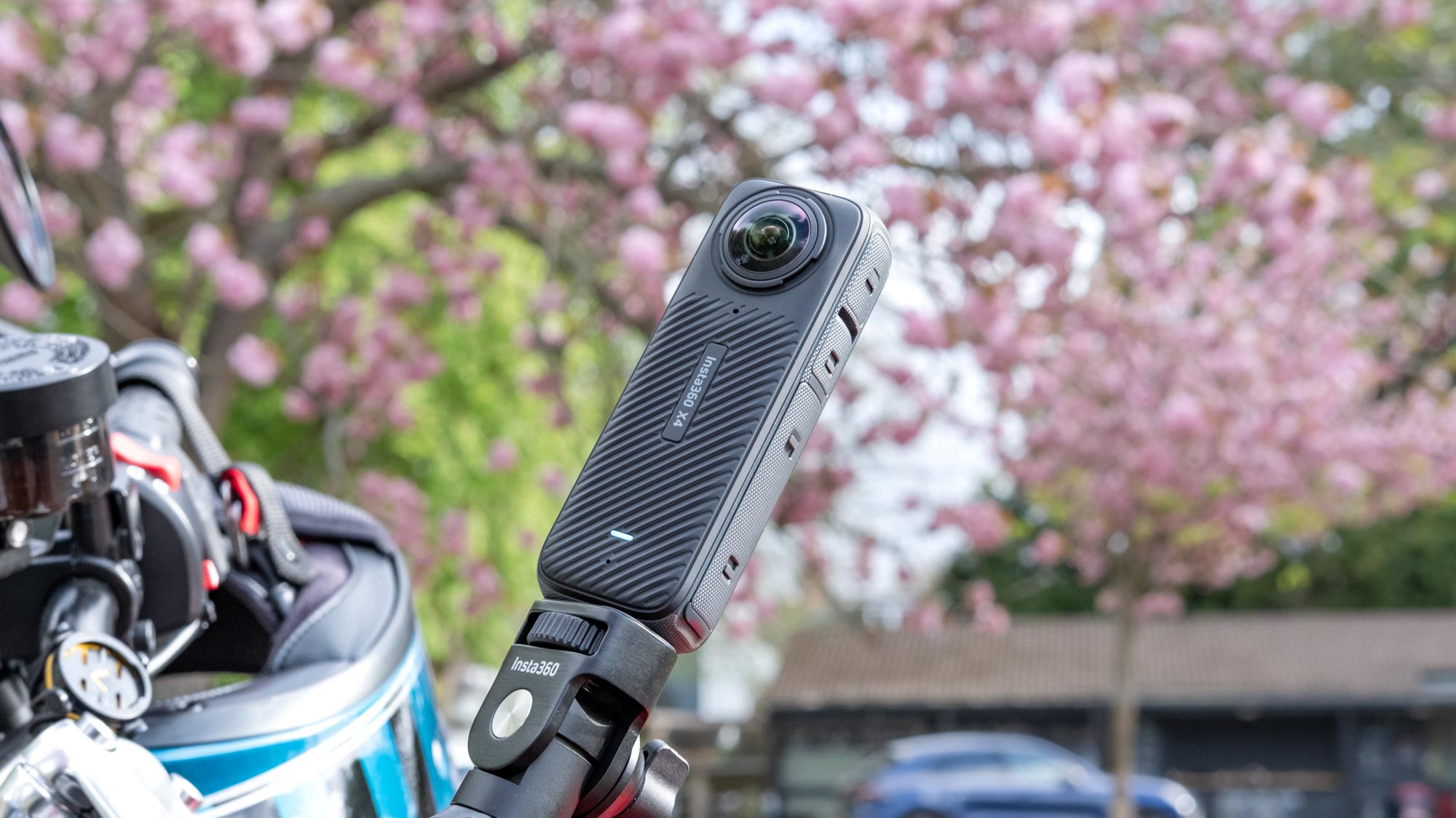
The Insta360 X4 was unveiled on April 16th 2024 and is available from Insta360, major camera retailers and Amazon. It costs $499 / £499, which is around $50 more than the X3. It’s also pricier than today’s flagship action cameras, the GoPro Hero12 Black ($399), the DJI Osmo Action 4 ($399) and Insta360’s own Ace Pro ($449). As we’ll see though, the X4 is a lot of camera, potentially justifying its steeper price.
Insta360 X4 review: Design & controls
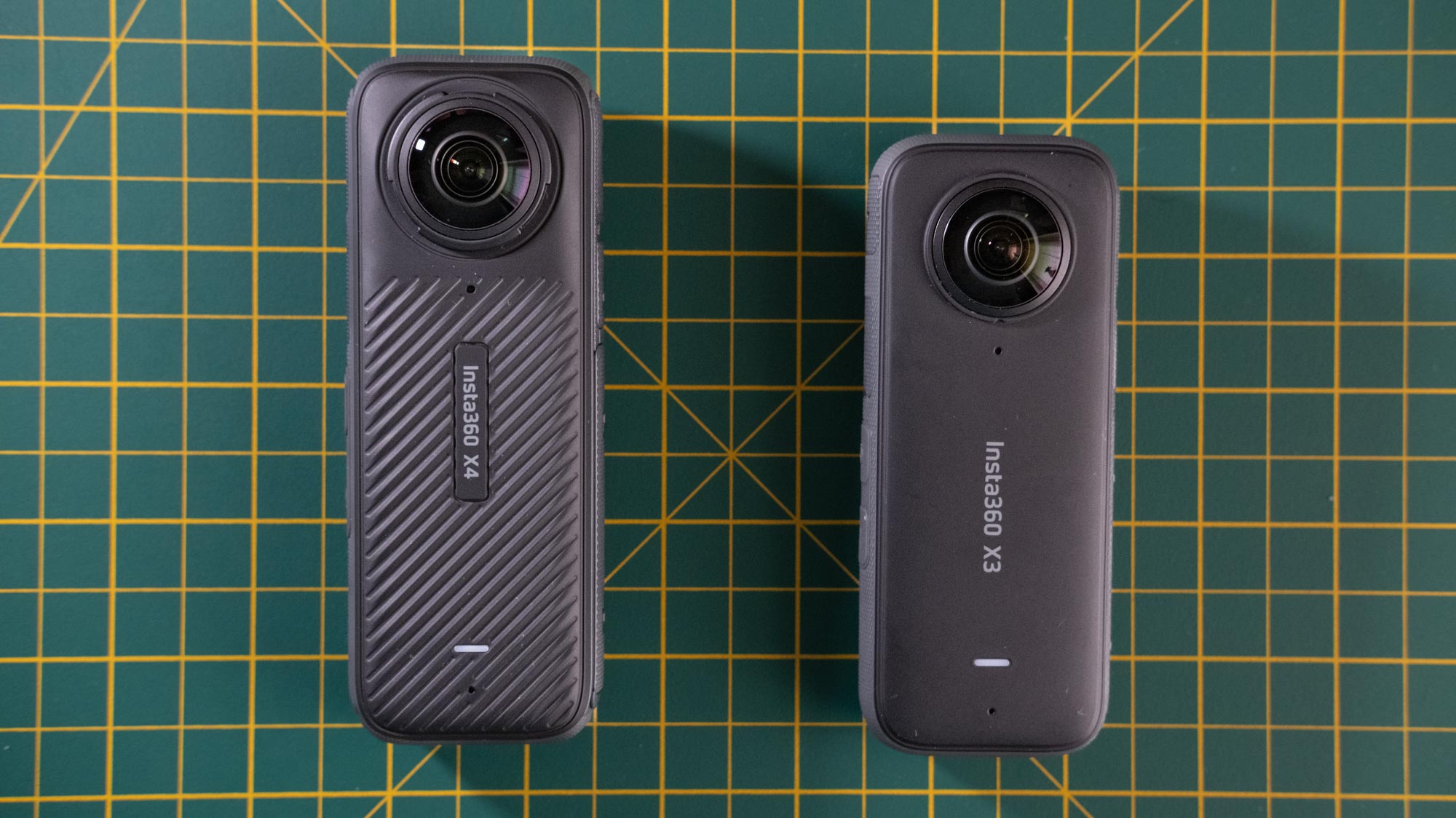
The Insta360 X4 looks virtually identical to the X3, with a few subtle changes, including a ridged pattern on the body. It’s an ounce heavier and slightly longer than the X3 (around ⅓ inch), the same width and fractionally deeper. Both are too cumbersome to comfortably mount on top of a motorcycle helmet, for instance, as you’d mount a traditional action camera. The X4 is instead better suited to chest or off-body mounting, such as on handlebars or selfie sticks.
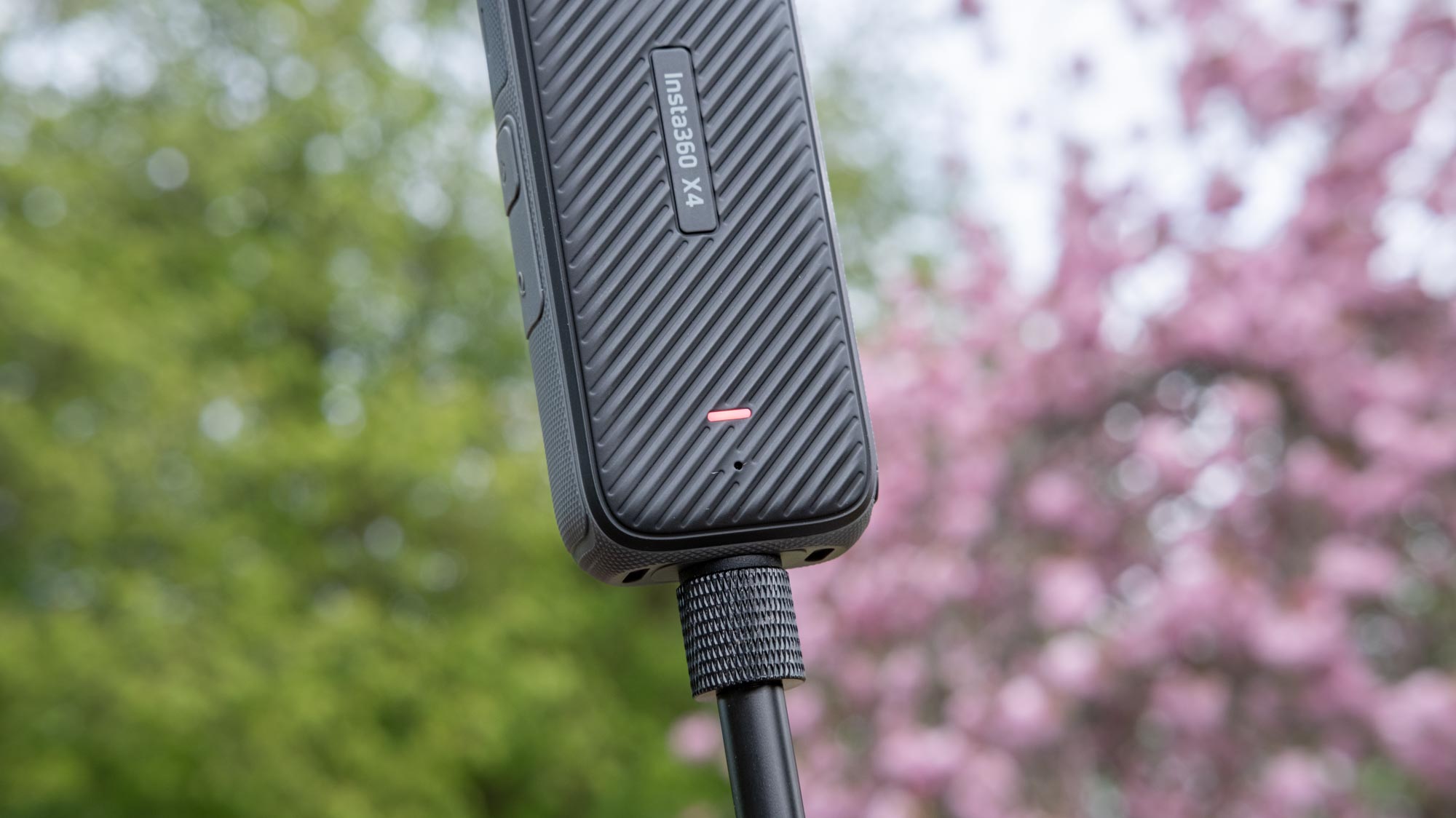
The rear touch screen has been boosted to 2.5 inches from the X3’s 2.29 inches and is positively spacious. As with the X3, there are front and rear LEDs to show recording or charging status.
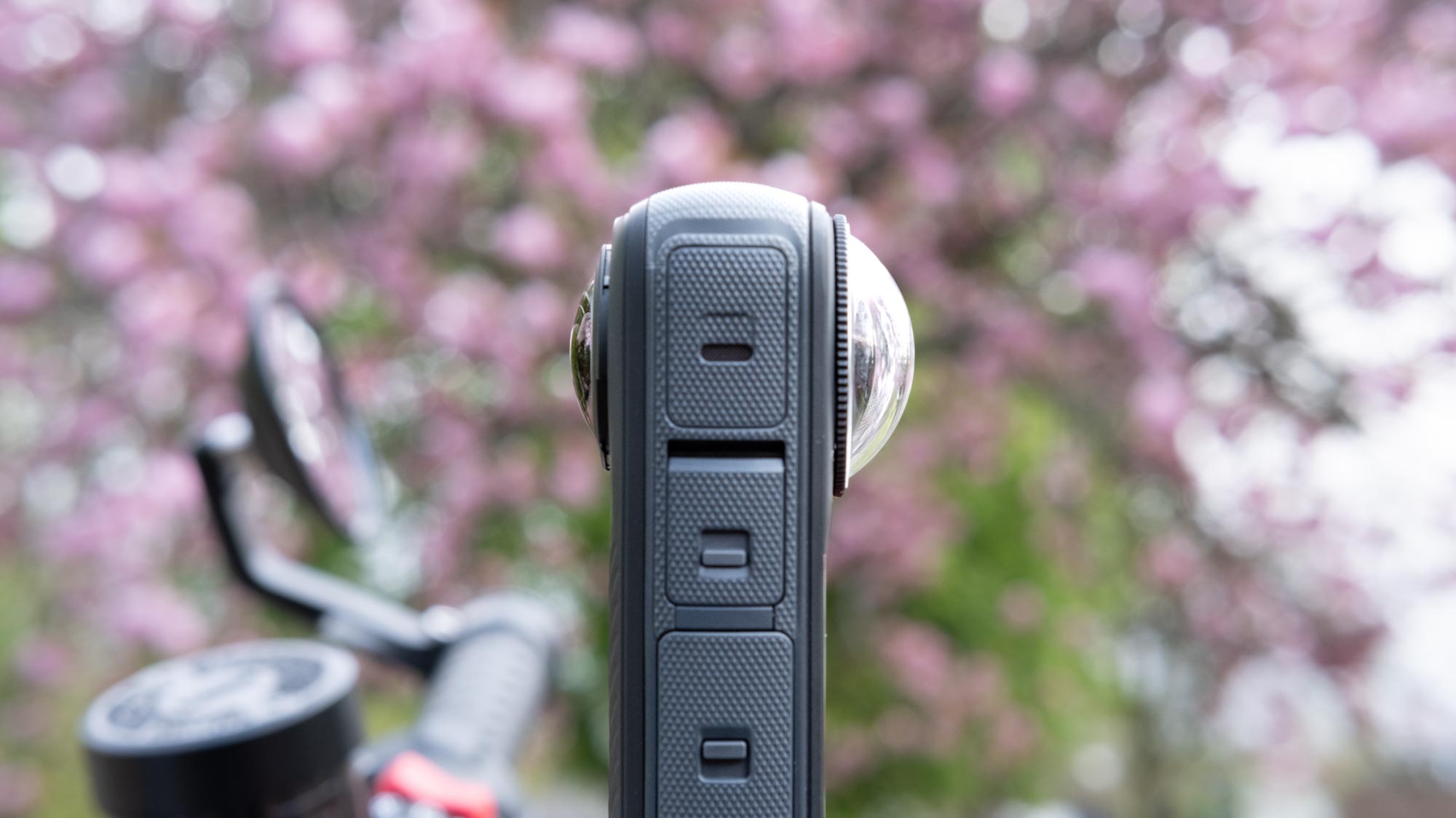
The X4 sports the same dual lens design as the entire X lineup. Around the rim of the lens housings are slots for lens protectors that guard against impact, while sacrificing image quality — you can see in the test footage below the optical artifacts caused by the supplied plastic protectors. Upgraded tempered glass protectors are available for extra impact resistance. The X4 can automatically detect which are fitted to compensate for the altered optics when stitching 360 footage.
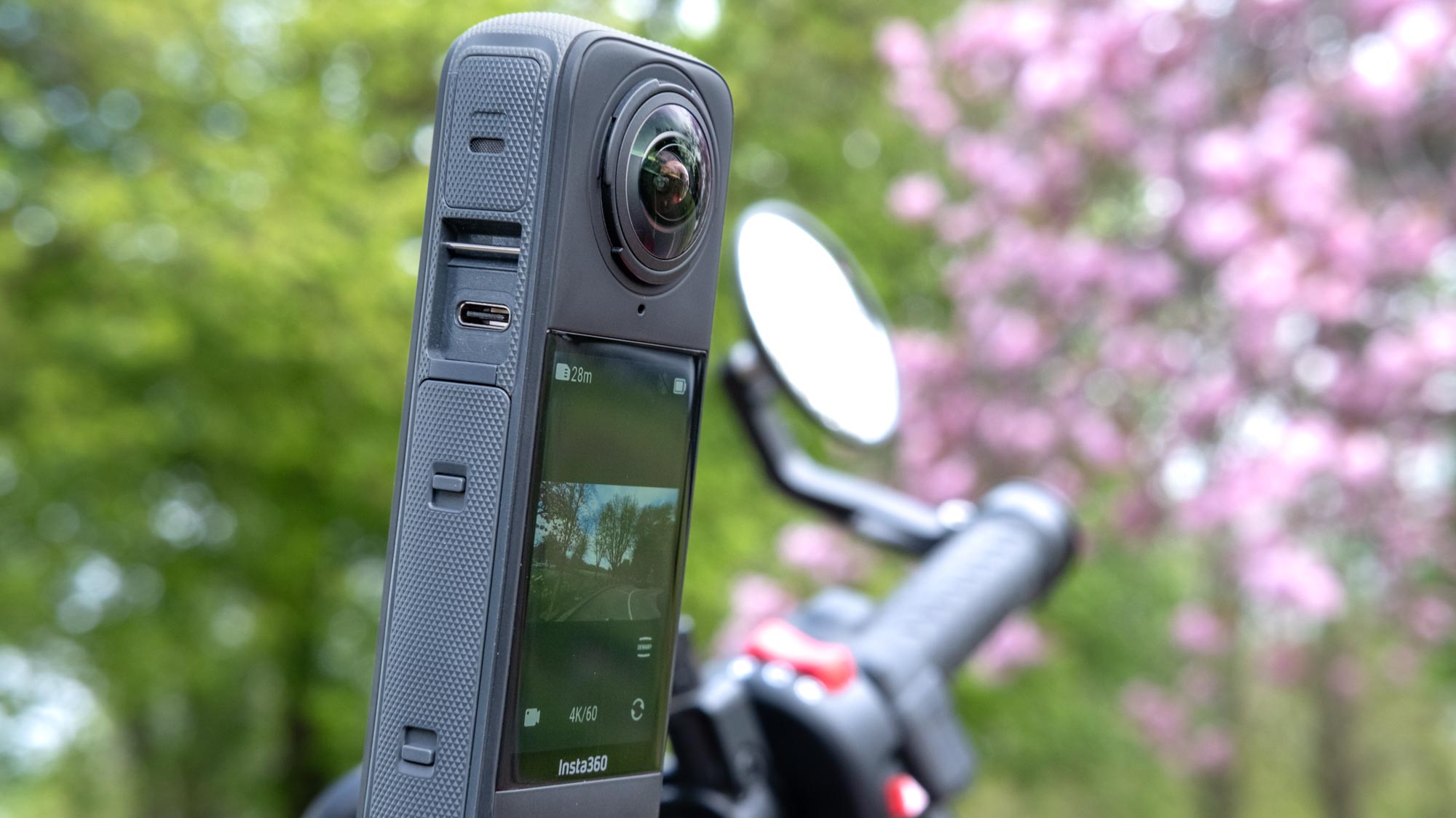
The X4 features a USB-C port with a detachable cover so that you can attach adapters, to hook up an external mic, for example. The MicroSD slot is positioned inside the battery department, so you’ll need to remove the battery to change cards.
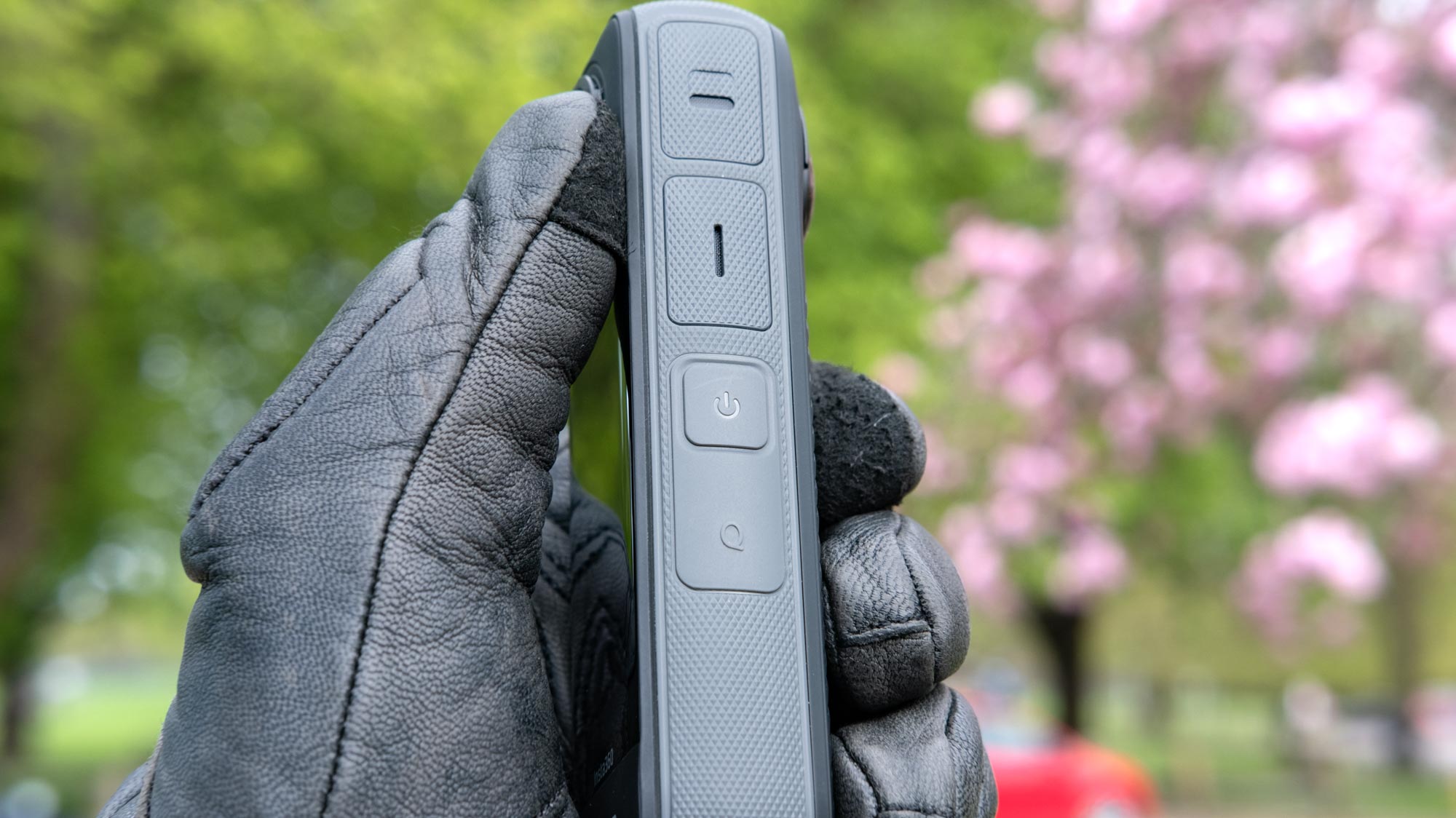
Build quality is fantastic, befitting a product of this price. The menu system is easy to use and sensibly laid out, with a shallow learning curve. My only minor gripe with the UI is the record button, which I found impossible to press wearing motorcycle gloves — quite dangerous and distracting while operating on the move. A solution is to remap the recording function to the Q button, which I would strongly recommend if you wear gloves while using the device.
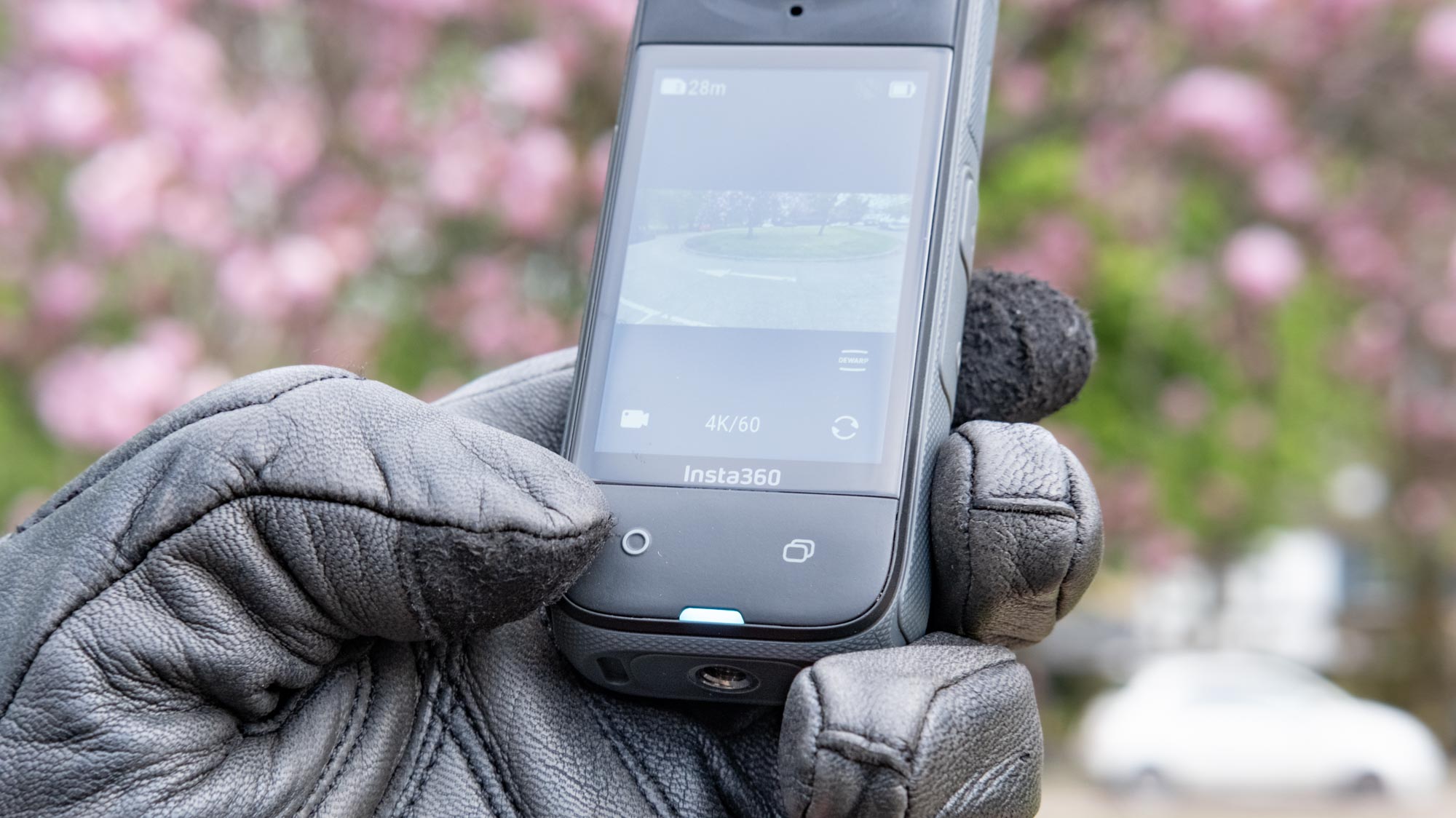
Just like the X3, the Insta360 X4 is waterproof down to 33ft (10 meters) — the same depth rating as flagship action cameras like the GoPro Hero12 Black and Insta360 Ace Pro, although lower than the DJI Osmo Action 4’s 59ft (18m) rating.
Insta360 X4 review: Image stabilization
If you want YouTube-worthy footage, your camera needs excellent stabilization like this.
As with every other Insta360 camera I’ve tested, the X4’s image stabilization is fantastic. This is best demonstrated by the standard 16:9 4K/60p footage below, which is beautifully smooth, even on the bumpy, pothole-filled roads of South Wales.
I even shot using MeMode (see the section below) at 60fps, which disables stabilization, and found the footage far less shaky than I was expecting. If you want YouTube-worthy footage, your camera needs excellent stabilization like this.
Insta360 X4 review: Video performance
The Insta360 X4’s video performance builds on that of the X3, upgrading maximum 360 degree resolution from 5.7K/30p to 8K/30p, with 5.7K/60p now available too. That 8K resolution is for the entire 360 FoV, and equates to 2.7K/30p maximum resolution when reframed to 16:9 for YouTube or 9:16 for social media. This is a massive boost over the X3, which had an effective maximum resolution of 1080p when reframed to 16:9.
2.7K/30p may sound low when compared to a 4K/60p action camera, but that is currently the sacrifice you make for the flexibility of 360-degree footage. Shooting 360 footage allows awesome features like real time in-footage panning between FoVs, or the invisible selfie stick mode for an overhead floating perspective, to name just a couple. It means you can effectively shoot different angles at once, so a single camera can record both your main footage and b-roll, avoiding the need for a second camera. This is without doubt my favorite aspect of a 360 camera, so I’m thrilled that the X4 now finally packs such flexibility alongside a respectably high resolution.
The X4 also has a neat trick up its sleeve called MeMode. This mimics the invisible selfie stick effect, stitching and reframing in camera without recording in the full 360-degree FoV. This allows you to achieve invisible selfie stick style footage in up to 4K/60p (versus the 2.7K/30p you’d get from reframed invisible selfie stick footage shot in 360 mode), albeit without stabilization above 30p. It can be a little tricky to get right, as counter-intuitively you need the camera positioned horizontally with the lenses facing upwards and downwards. Footage isn’t as striking or flexible to edit as full 360-degree invisible selfie stick video, but serves as a reasonable alternative if you want a similar effect in higher than 2.7K.
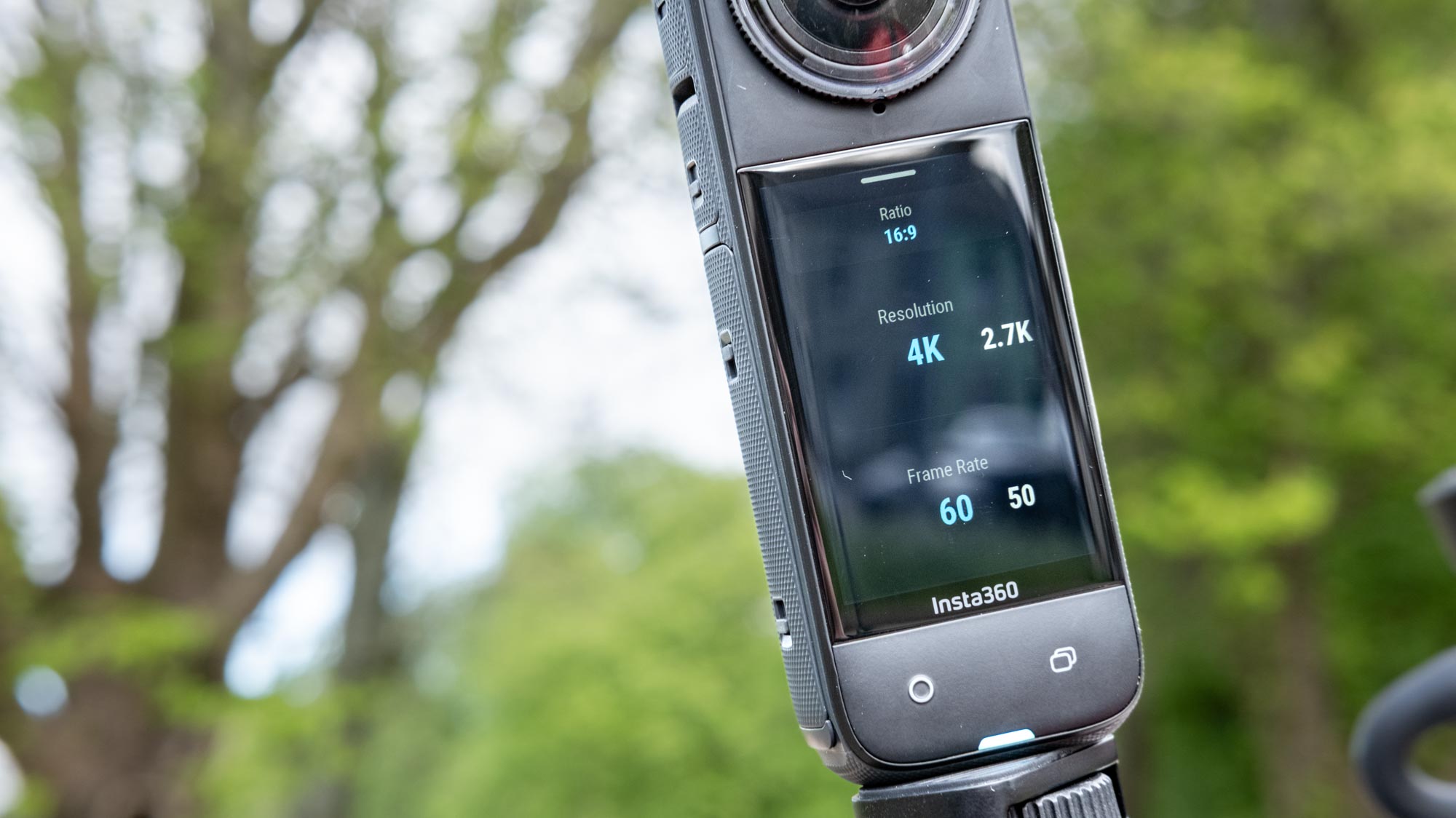
The X4 can also shoot 4K/60p in single lens mode, so you can use this as a traditional action camera. For slow motion, the X4 can shoot in 4K/100p or in a new Bullet time mode for Matrix-style slow motion panning. I didn’t get to try this out, but you can see some example footage from Insta360 below.
The X4 utilizes a ½-inch sensor and the 5nm chip found in the Insta360 Ace Pro. That camera’s image quality was let down by some mediocre Leica optics, but the X4 doesn’t suffer the same fate: image quality is great. 360 stitching is mostly fine — I could see the occasional dodgy stitch in post, but these almost always disappeared with a slight adjustment in viewing angle as the camera re-stitched. You’ll want to avoid using large mic cables when shooting 360 video — for me, this resulted in the ghostly apparition of my red Rode cable floating in frame.
Low light performance will not be comparable to a camera with a larger sensor as you’ll find in a mirrorless camera or DSLR, but the X4’s ½-inch sensor is larger than that found in the GoPro Hero12 Black or DJI Osmo Action 4, so will produce cleaner images in low light.
As with other Insta360 cameras, you can tweak your exposure settings and filters in camera, with more filters available in the app. The camera also features face detection, which quickly and accurately locks onto faces in frame.
Insta360 X4 review: Audio performance
The Insta360 X4 features four internal microphones, so no increase from the X3. These actually perform surprisingly well for a camera that hasn’t been manufactured by DJI.
You’ll want to use an external microphone if you’re after the best audio quality — Insta360 offers a USB-C to 3.5mm adapter ($19 @ Amazon) and a cold shoe bracket for the X4 ($29 @ Amazon), which in my opinion are essential purchases. However, I was really happy with the performance of the internal mics in wind reduction mode. In the MeMode footage above (using internal mics), the audio wasn’t fantastic, but was nowhere near as bad as I was expecting given I was riding quite fast.
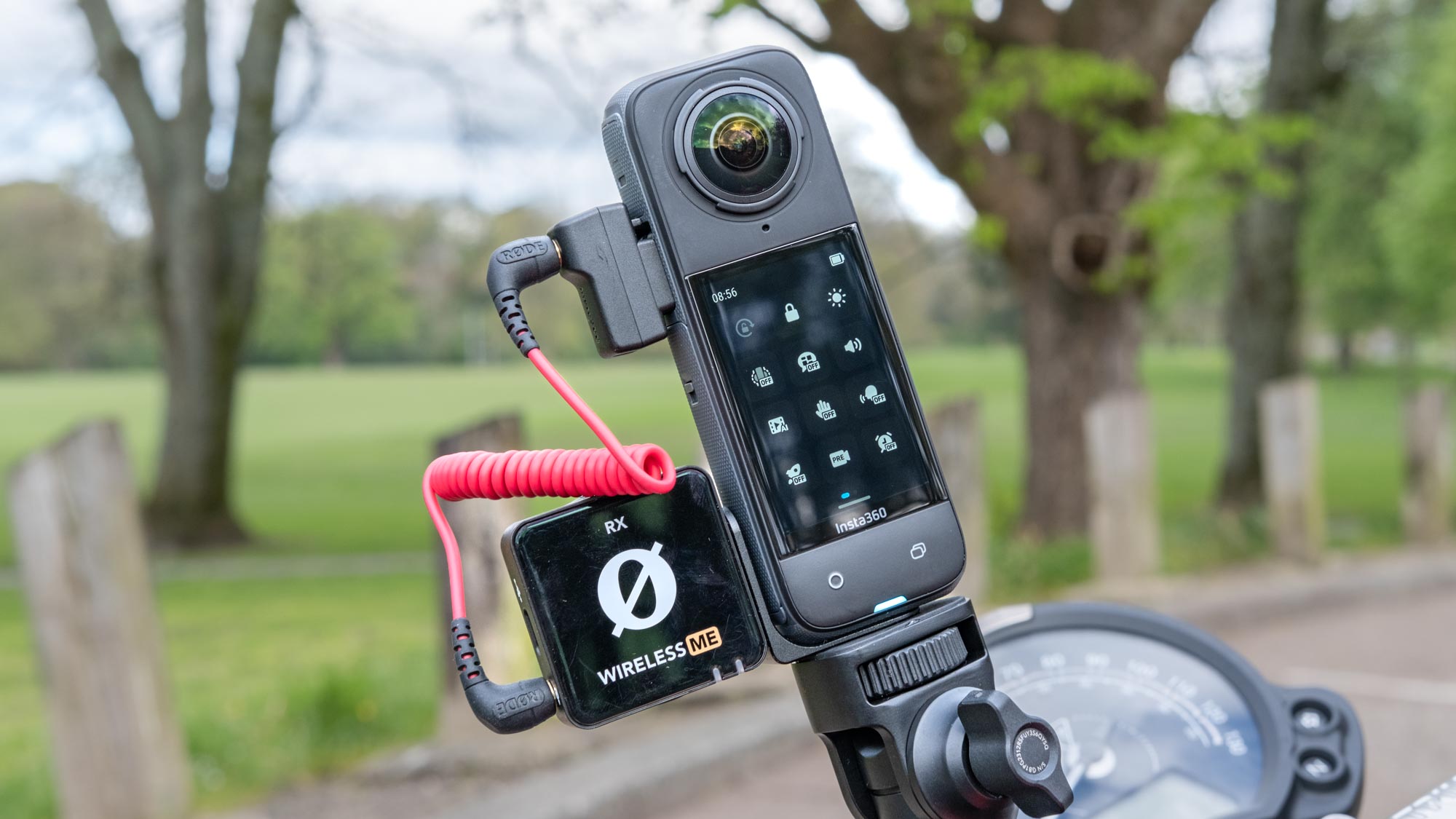
The X4’s mics performed much better than almost every action camera on the market save the DJI Osmo Action 4 (check out our DJI Osmo Action 4 test video to compare yourself). In fact, I’d say wind reduction was noticeably better than on the Osmo Action 4, although the DJI captured much more of my bike’s low frequency exhaust noise.
Insta360 X4 review: Smartphone app
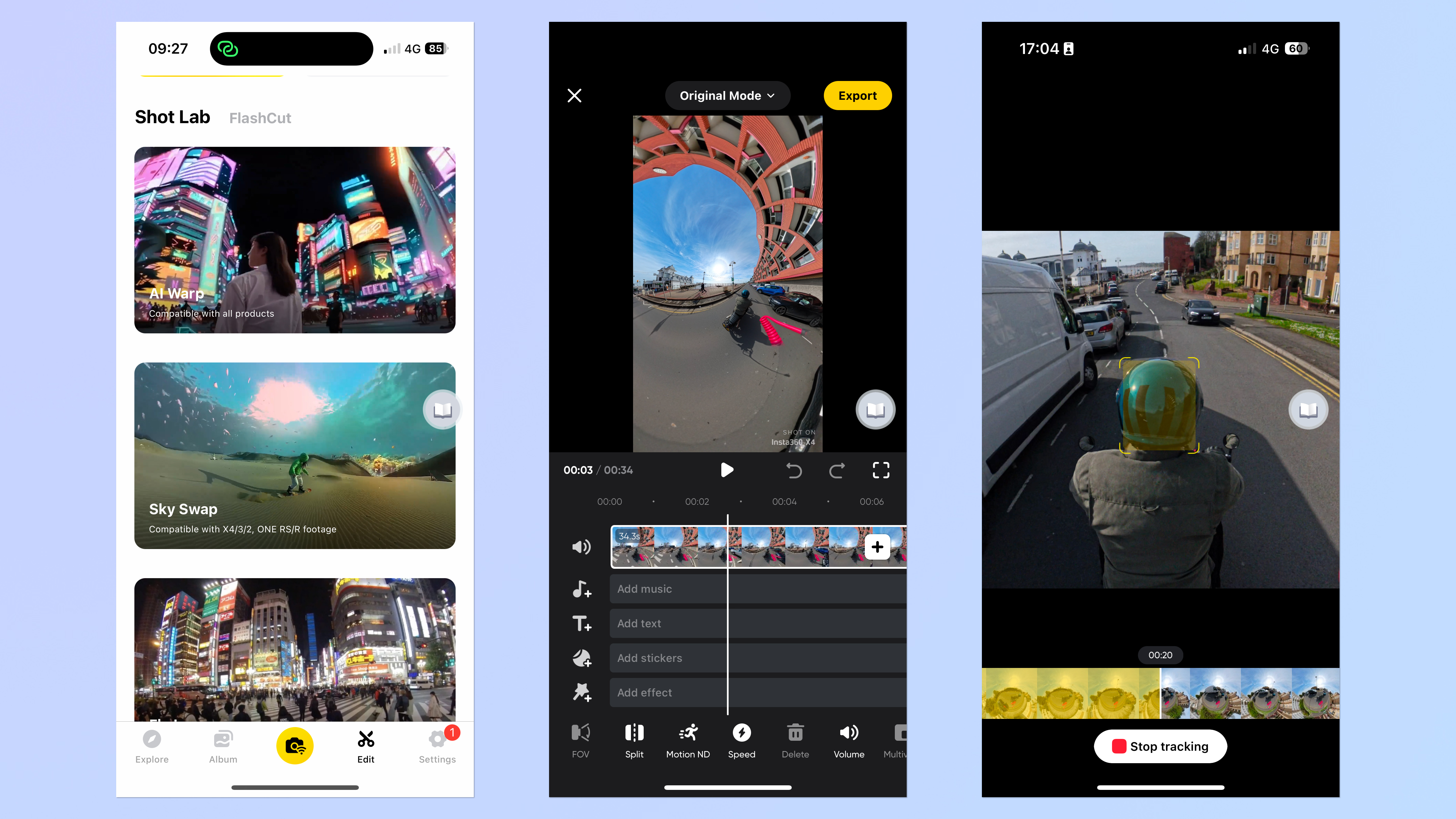
Insta360’s smartphone app is easily best-in-class. It’s simple to connect to, stable, straightforward to use and generally very polished. Unlike GoPro’s paywalled Quik app, the Insta360 app is totally free and offers incredible functionality, especially for 360 footage. You can edit 360 footage to a high degree straight from your smartphone, without needing a computer or even having to download the full video files to your phone, then trim, adjust or apply filters. Most importantly, you can utilize the Keyframe feature to control framing, switch between FoV modes and apply various effects. There’s also an awesome subject-tracking feature which lets you draw a box around a subject and lock framing on it — this saved me lots of time keeping the framing centered on myself.
If you want to correct audio, you will need to use one of the best video editing software applications, as the Insta360 app doesn’t give you professional audio FX features like, say Adobe Premiere Pro. On that note, Premiere plugins for managing the X4’s 360 footage should be available at or shortly after launch. Insta360 also offers a desktop application for editing 360 footage, which is free.
Making their return after launching with the Ace Pro are AI Warp effects, which are fun to play around with, if not slightly gimmicky (check out our Insta360 Ace Pro review to see those in action). An interesting new AI-powered editing feature is the AI 360 editing mode, which analyzes footage to decide on and apply edits. I couldn’t get this to work on my beta testing version of the app, although I would personally prefer not to use it anyway because I like to control edits myself. Besides, AI often doesn’t get things right. There is a Quick editing mode, though, which offers a more streamlined 360 editing experience and uses a joystick to control framing. It’s a useful go-between if you want to save time editing but still want control.
Insta360 X4 review: Battery life & overheating
Battery capacity is up from 1800mAh in the X3 to 2290mAH in the X4, which is a sizable boost. The X3 was rated by Insta360 for just over 80 minutes in 360 mode at 5.7K/30p, and in my 4K/30p indoor battery test achieved just under 90 minutes.
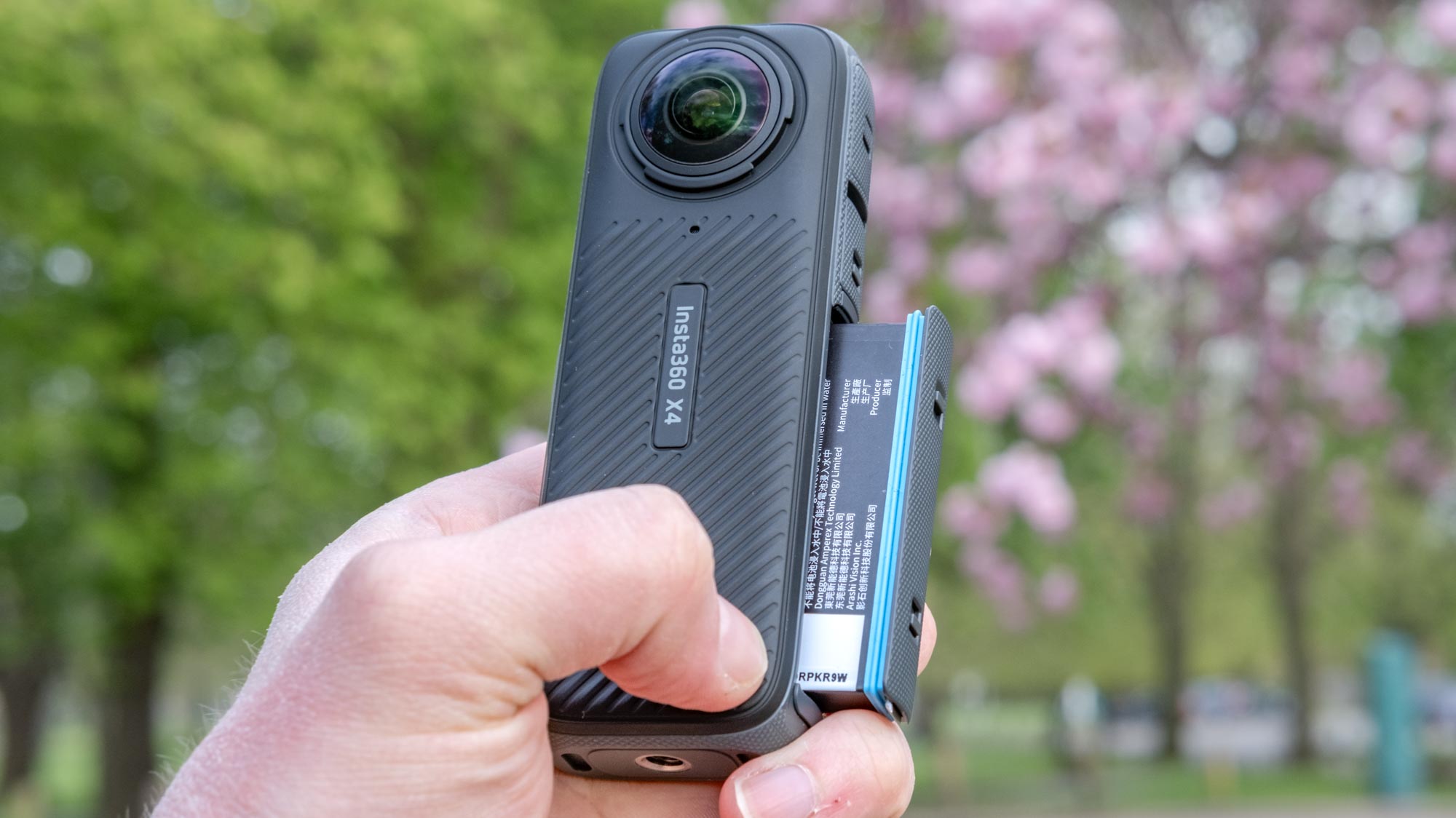
In 360 mode, the X4 is rated for a huge 135 minutes at 5.7K/30p. In my 360 testing at full 8K/30p it achieved 73 minutes, so not much shorter than the X3 at maximum despite the massive boost in resolution. At 4K/30p single lens, the X4 achieved 131 minutes. At 4K/60p single lens, the X4 achieved almost 111 minutes, or around 30 minutes longer than Hero12 Black, Osmo Action 4 and Ace Pro. This is phenomenal battery life, especially if you want to use the X4 as a traditional action camera.
Thermally, the X4 performed in exemplary fashion again, and didn’t overheat once during 4K/30p and 4K/60p tests. It also wrote entirely to single files, while the X3 had to pause recording several times and break footage into clips to help manage temperatures. The X4 warns you against shooting in 8K/30p unless you’re moving, though, to avoid overheating, which could be problematic if you want to shoot 360 footage of slower-paced activities.
Insta360 X4 review: Verdict
The Insta360 X4 has naturally taken the crown from the X3 and earned its place as the best 360 camera around. The benefits and flexibility of 360 recording, like the invisible selfie stick mode and the ability to change camera angles after shooting, now no longer need to come at the expense of reframed resolution. Sure, 2.7K isn’t 4K, but it’ll still be enough for producing nice-looking YouTube videos. The X4 also features fantastic stabilization, surprisingly decent internal mics and pairs with Insta360’s fantastic smartphone app. It’s easily the best 360 camera you can buy, or ever made.
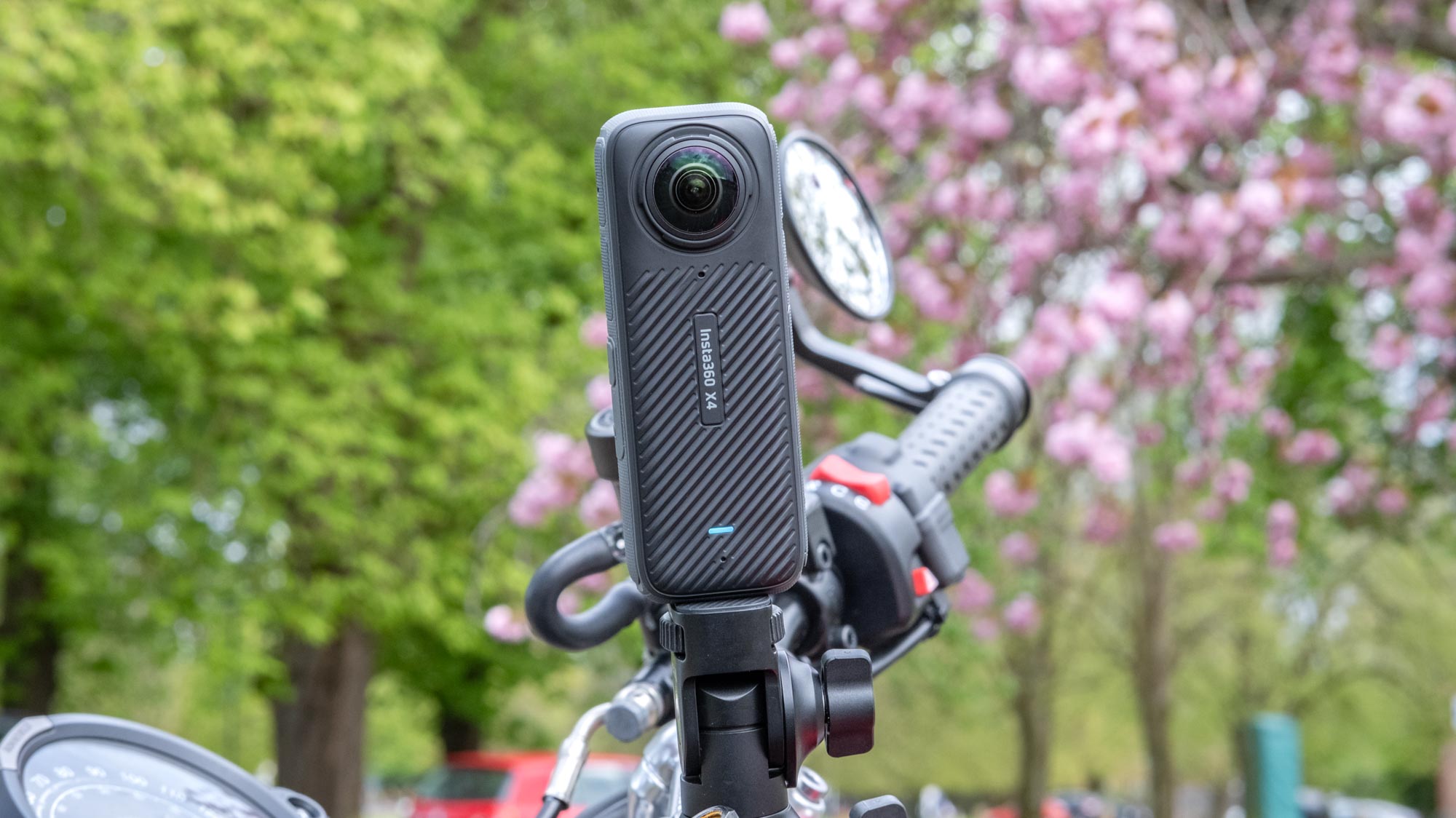
Thanks to 4K/60p single lens recording, the X4 can double as a traditional action camera, too, where its battery life is extremely impressive versus other action cams at 4K. Whether the Insta360 X4 will suit you better than a traditional action camera is down to your requirements. If you need higher than 4K output (which won’t be the case for most), a Hero12 Black or Ace Pro are better choices. For deeper waterproofing, you’ll want the Osmo Action 4. Those cameras are also more compact, increasing mounting options and portability.
Where the Insta360 X4 truly excels is in its usability. If you want one camera to record your exploits in as many cool ways as possible, it’s worth spending the extra money over a traditional action camera. I would happily use the X4 as my main camera for motorcycle footage from now on — I love only needing to take one camera with me that can shoot my main footage, then some awesome, visually-interesting b-roll. The Insta360 X4 is the ultimate all-rounder.

Peter is a Senior Editor at Tom's Guide, heading up the site's Reviews team and Cameras section. As a writer, he covers topics including tech, photography, gaming, hardware, motoring and food & drink. Outside of work, he's an avid photographer, specialising in architectural and portrait photography. When he's not snapping away on his beloved Fujifilm camera, he can usually be found telling everyone about his greyhounds, riding his motorcycle, squeezing as many FPS as possible out of PC games, and perfecting his espresso shots.







